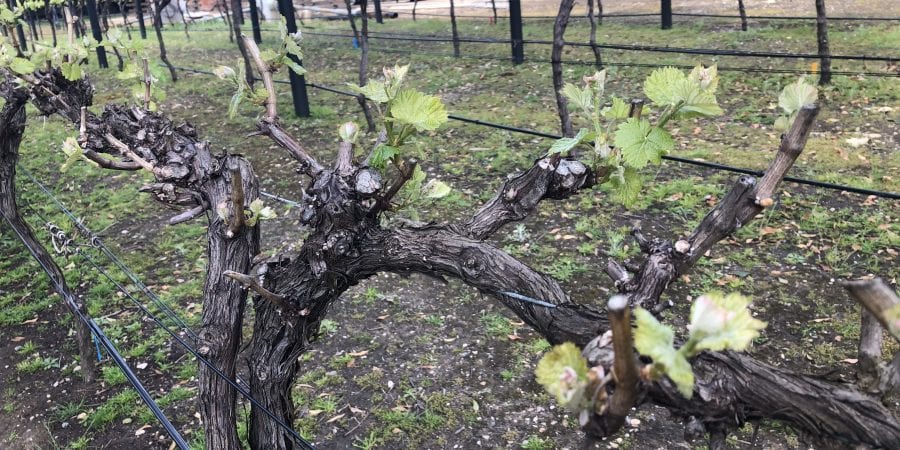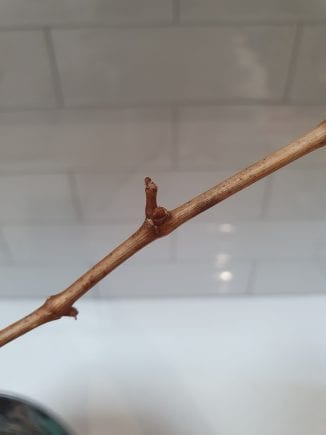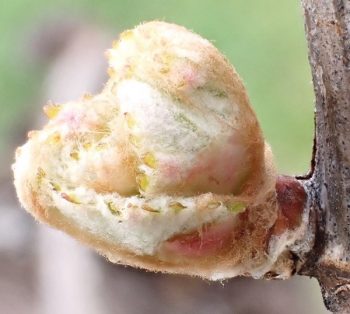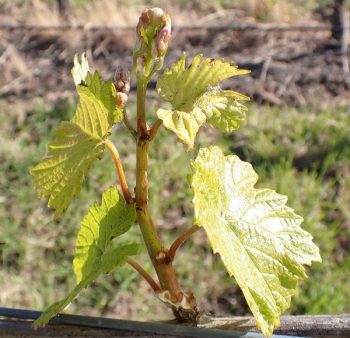It’s time to get serious… again.
Even though I’m still hibernating here next to the fire, vines all over the Adelaide Hills regions are springing to life.
So, that means it’s time for a quick refresher on grapevine growth stages and the significant first step of budburst. It’s the sign that winter dormancy has come to an end and vintage 2021/22 is upon us!
What is budburst?
Budburst refers to the period in early spring during which grapevines emerge from dormancy to produce new shoots. Small buds on the vine will now give rise to leaves and flowers. Budburst is brought about by changes in the air and soil temperature.
What are buds?
As I’ve mentioned before, I have always struggled to get my head around this topic. And I think this is why…
The buds that will form THIS year’s growth (all the shoots, leaves and bunches for Vintage 2022) were formed during LAST year’s growing season.
Let me say that again…
When the grapevine grew all its bits and pieces (starting in Spring last year – let’s call that Year 1) it also grew all the bits and pieces it will need to start the process off again in Spring this year (Year 2). If you have a good enough microscope (and know what you’re looking for) you can also see tiny bunches in the buds! Amazing!
(and that isn’t actually quite right because the grapevine actually grew all the bits and pieces for Year 1 in the year before that! See why I get confused?!)
Bud formation
This is a huge topic and I could delve pretty deep and probably confuse you and me both, but I’m not going to do that.
All I’m going to say is that a bud forms (by the magic of nature!) at every node on a grapevine cane.
These are photos I took last year of some pretty sad-looking grapevines from an abandoned experiment in my backyard.
That bit pointing up to the corner of the photo is called a cane. And all along the cane (spaced at regular intervals) are the nodes.
Here are some (not fabulous) close-ups of some nodes…
And that little bump at each of the nodes is the bud.
Dormancy
We know that towards the end of the growing season in autumn, vines lose their leaves. As temperatures decrease further, vines undergo a number of processes in preparation for ‘shutting down’ for the colder months.
Vines set themselves up with the biological equivalent of ‘anti-freeze’ to ensure live tissue remains for the renewal of growth in the following spring.
Vines are not completely inactive when dormant though. They can’t photosynthesize because they have no leaves, but they do respire (or breathe) to maintain basic metabolic functions. Their energy source at this stage is carbohydrates stored during the previous growing season, in the roots, trunk and cordons (stems/branches). Dormant vines have to exist on their stored reserves from the time they lose their leaves. The new shoot growth in spring is completely dependent on these reserves for approximately the first month.
Budburst
Growth of dormant buds is the result of the commencement of the expansion of the bits and pieces we talked about earlier which pre-formed in the previous season. First, the cells inside these structures expand and then eventually the cells divide and multiply.
Lots of things affect the time of budburst including…
- Air temperature
- Soil temperature (or specifically the temperature of the roots)
- Variety
- vineyard management practices in the preceding season
- time of pruning
… among others.
According to last Friday’s Crop Watch report from our friends at Hamilton Viticulture, most vines in the Hills have reached budburst and beyond…
E-L 3 Woolly bud and green showing
Cabernet Sauvignon at Forreston
E-L 6 Four leaves separated.
Chardonnay at Macclesfield.
Loving our blog? Sign up for weekly updates straight to your inbox…
E-L stages
Without going into too much detail (because we’ve chatted about this before) I just want to remind you about E-L stages.
As with all perennial plants, the grapevine follows an annual growth cycle which has eight major stages.
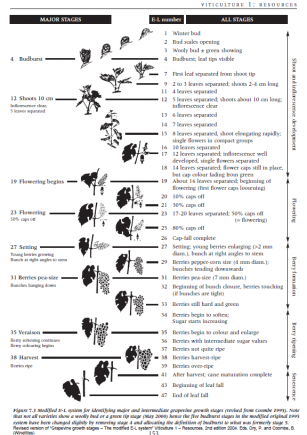
And, in the science world, we like systems and classifications (well, at least I do!). And it turns out two blokes named Eichhorn and Lorenz did too. So much so that they came up with the first classification of stages for grapevine development (or phenology) in 1977. It has been modified a few times since then but is now commonly referred to as the Modified Eichhorn-Lorenz (E-L) system.
The diagram on the left is the official chart (click on it for a more readable version). You can see that the eight major stages are preceded by a number of other stages numbered from 1 to 47.
This chart should make those words from the crop watch report up there make a lot more sense.
Although… there is a mistake in those growth stages from Crop Watch. Using the chart as your guide, does anyone want to have a guess at where the mistake is?
Add your educated guess to the comments below!
